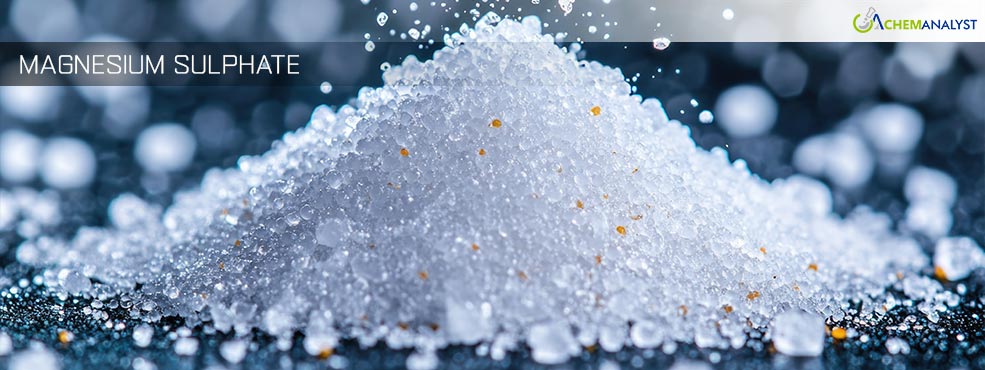Welcome To ChemAnalyst

At the beginning of the second quarter of 2025, the Magnesium Sulphate prices in Europe showed a bullish trend, with prices rising slightly in April. The supply levels were constrained due to disruptions in trade and shipping. Congestion at major ports and low water levels on the Rhine River led to delays and higher costs. Demand was moderate, with steady growth in the cosmetics sector, but agricultural demand slowed as the region entered summer. Despite this, some inquiries persisted, and producers raised prices due to limited stock availability. Magnesium Sulphate prices are expected to rise further as spring approaches, driven by higher agricultural demand and increasing shipping and production costs.
The Magnesium Sulphate production remained stable in the region during April. However, supply levels were low due to disruptions in trade and shipping. Major ports like Rotterdam, Hamburg, and Antwerp faced congestion from high trade volumes and operational delays, which caused rising costs and shipping delays. Inland shipping on the Rhine River was also impacted by low water levels, reducing cargo capacity, and increasing freight costs. Additionally, changes in regulations, such as new toll systems in Denmark and the Netherlands based on emissions, added complexity to logistics.
Conclusively, at the end of April 2025, Magnesium Sulphate FOB Hamburg quotations hovered at USD 552/MT after witnessing an increase of 3% in last month's prices.
At the same time, the orders for Magnesium Sulphate remained moderate. The cosmetics sector maintained steady growth, supported by rising consumer interest in premium skincare products and digital retail channels. Notably, Beiersdorf reported a 1.7% increase in first-quarter sales, driven by strong performance in its skincare division. Despite some headwinds, the demand for Magnesium Sulphate in cosmetic formulations such as bath salts, exfoliants, and moisturizers remained stable and slightly upward.
However, Magnesium Sulphate demand in the European agricultural sector experienced a seasonal slowdown as the region transitioned into the summer months. With farming activity declining, purchasing interest remained subdued, especially amid broader concerns over global trade instability. Despite the weak prompt demand, some early summer inquiries were noted in the UK and France, while Italy showed signs of continued buyer interest. Nevertheless, producers across Northwest Europe persisted in raising prices, driven by limited availability of key feedstocks like sulphuric acid and efforts to sustain profitability despite declining offtakes.
Looking ahead, Magnesium sulphate prices in Europe are expected to rise further in the coming weeks of Q2 2025. As the spring season approaches, demand for Magnesium Sulphate typically increases, especially in the agricultural sector, due to its use during planting. Higher freight costs, driven by increased shipping activity and favourable summer trade conditions, could also contribute to price hikes. Additionally, anticipated increases in the cost of feedstock sulphuric acid may further push up production costs of Magnesium Sulphate, and market players might raise their quotations.
We use cookies to deliver the best possible experience on our website. To learn more, visit our Privacy Policy. By continuing to use this site or by closing this box, you consent to our use of cookies. More info.
